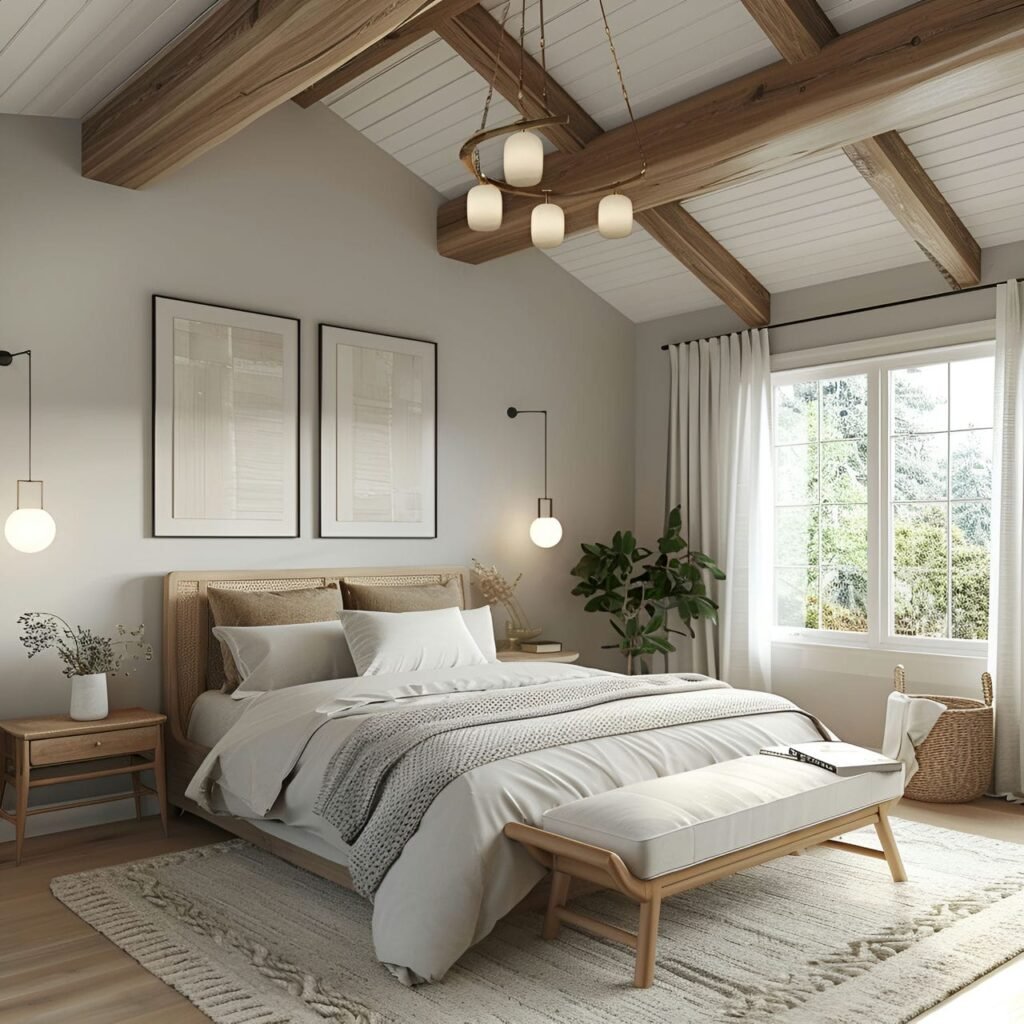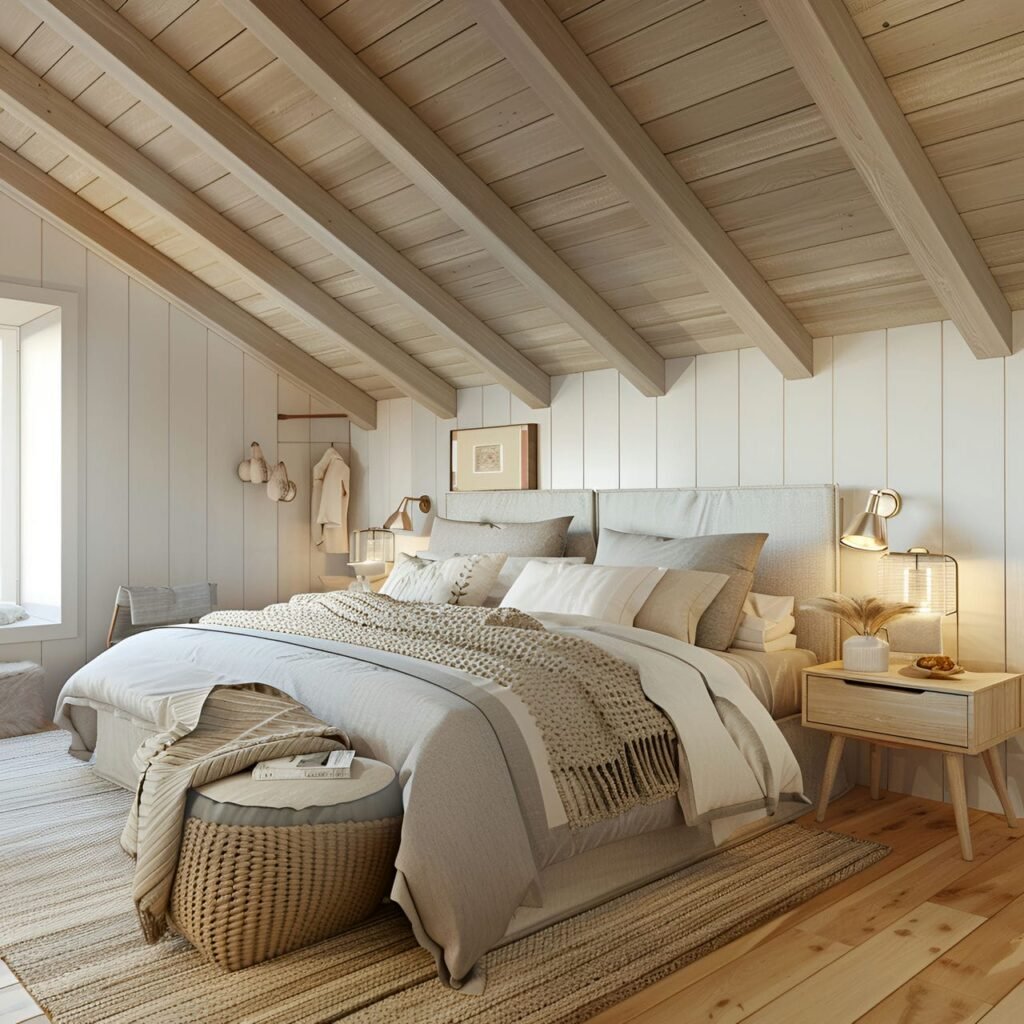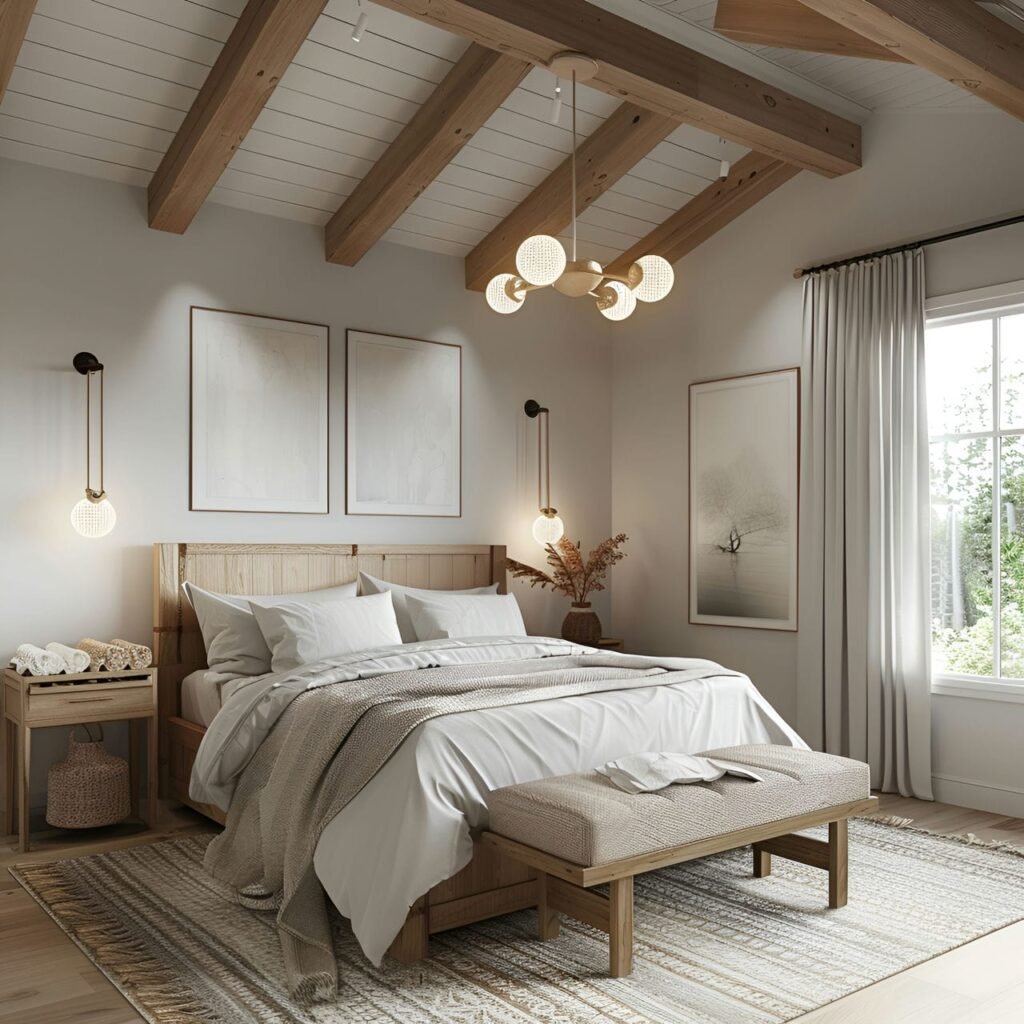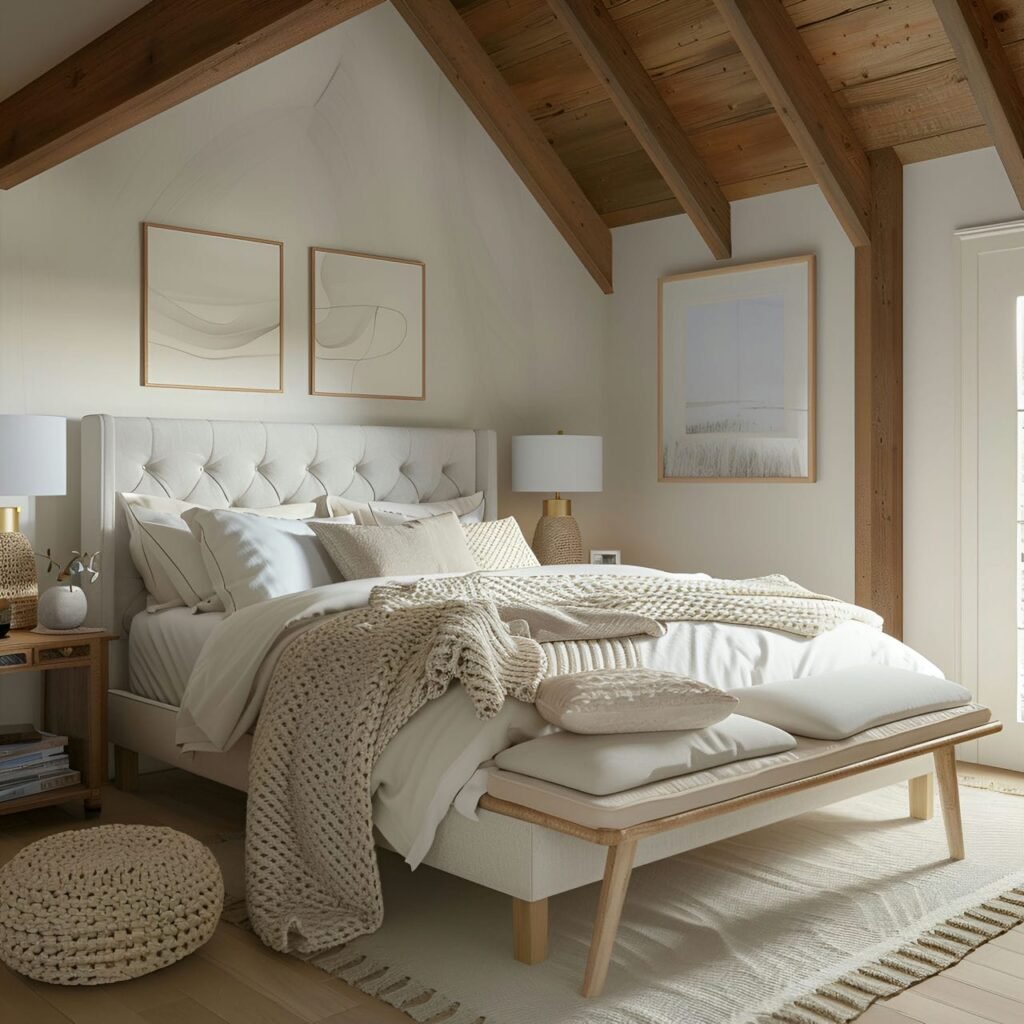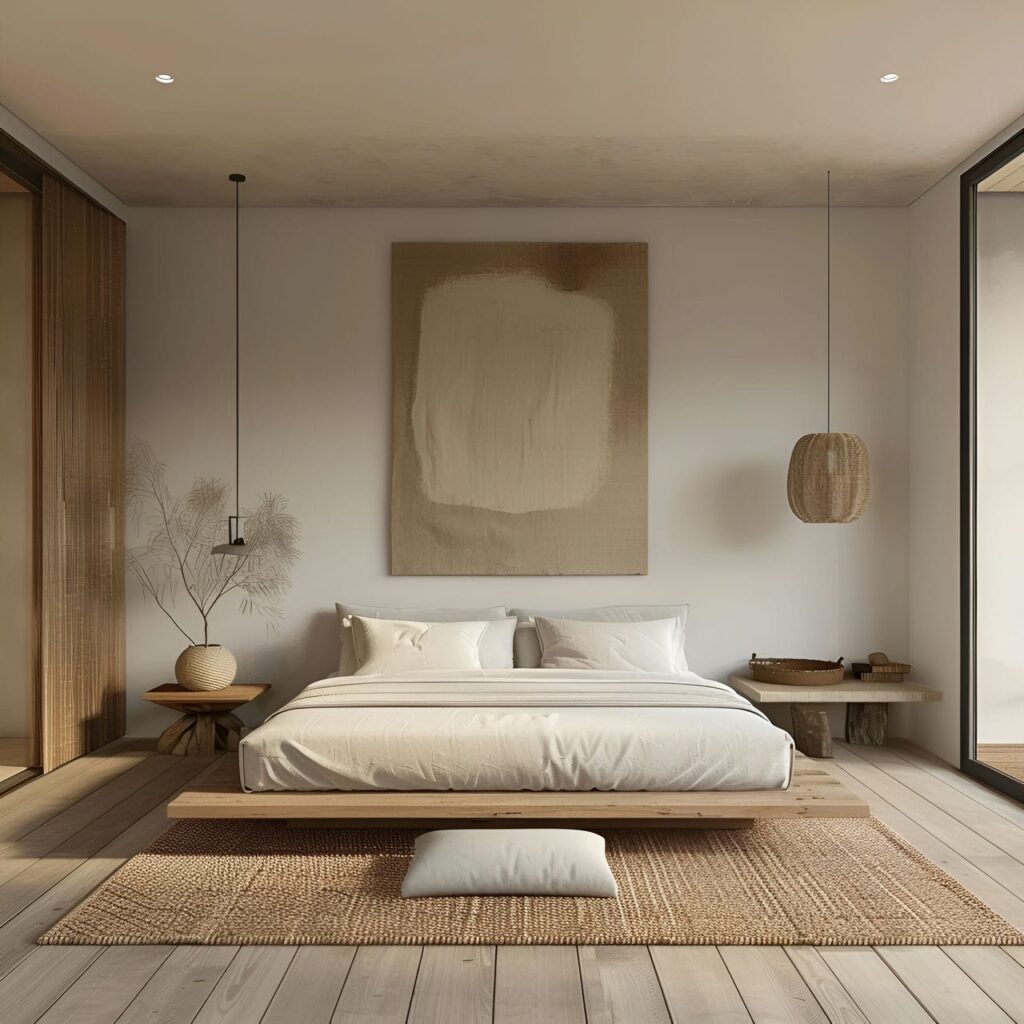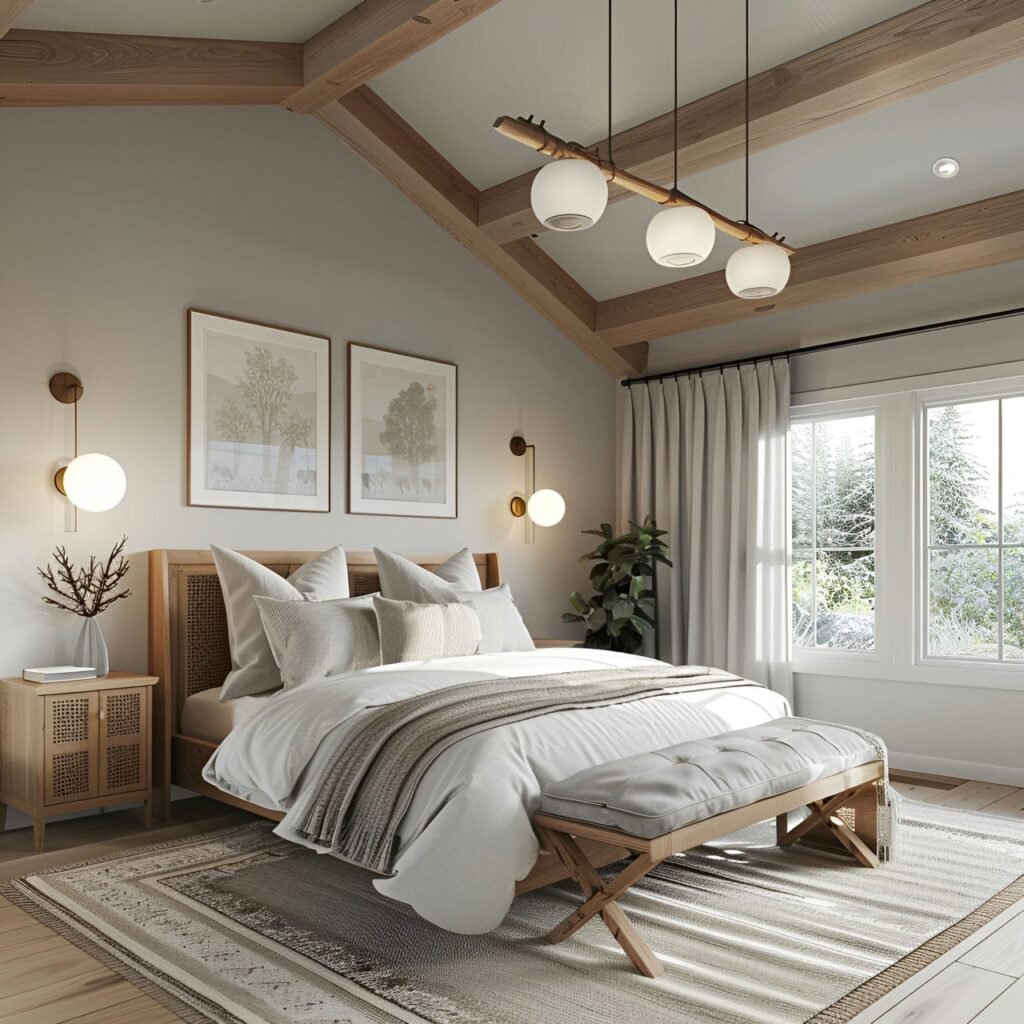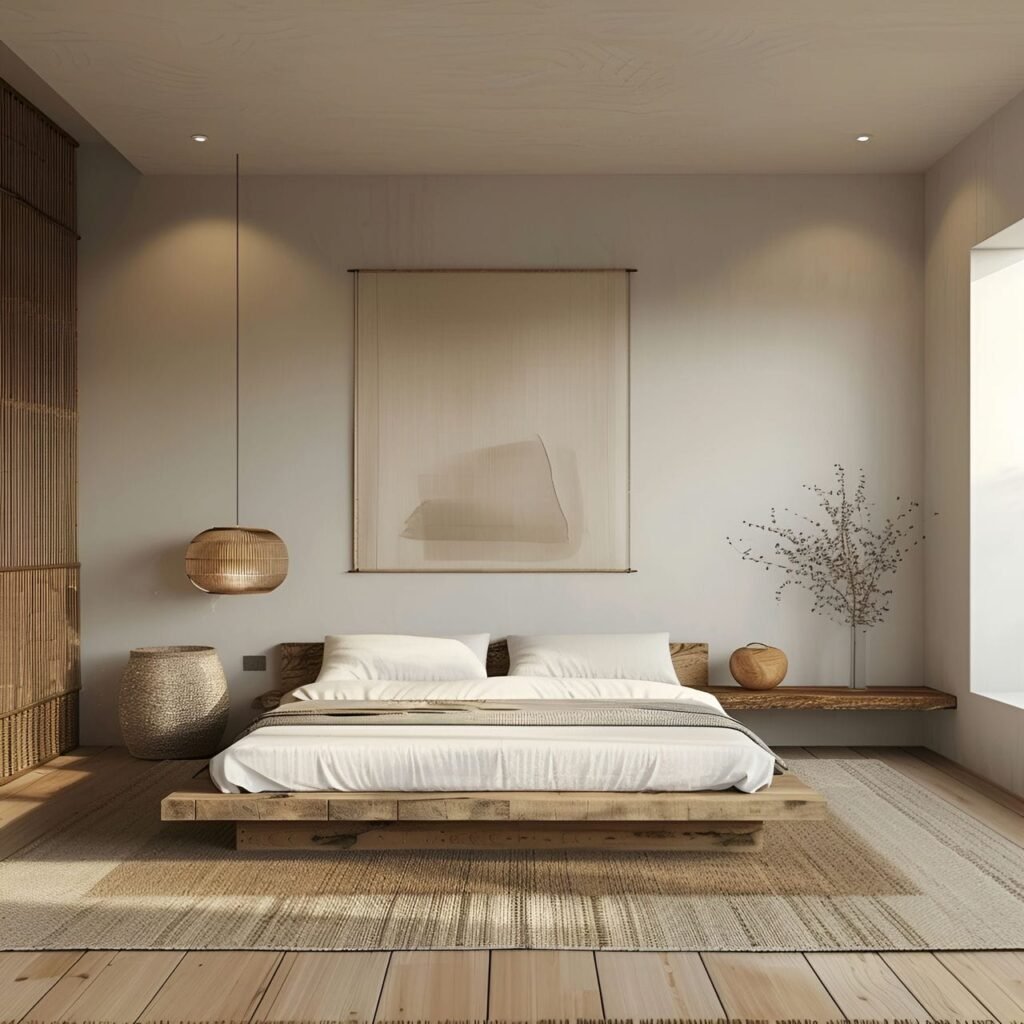A master bedroom is a large, comfortable room, usually the main bedroom in a house or apartment. It is a place where the owner can relax, sleep, and enjoy their privacy. The size of a master bedroom can vary depending on the house’s or apartment’s design and layout. The average size of a master bedroom is 14 feet (4 meters) x 18 feet (5 meters) or 252 square feet (23 square meters). Some master bedrooms may have additional features, such as a walk-in closet, a balcony, or a fireplace, which can increase the size and value of the room. The functionality of a master bedroom depends on the owner’s needs and preferences. Some owners may use their master bedroom only for sleeping and dressing, while others may use it for other purposes, such as working, reading, or watching TV. Some owners may also want to create a cozy and romantic atmosphere in their master bedroom by using soft lighting, candles, or music. The uses of a master bedroom are also influenced by the owner’s lifestyle and personality. Some owners may like to decorate their master bedroom with personal items, such as photos, paintings, or souvenirs, to reflect their taste and style. Some owners may also like to have different types of furniture in their master bedroom, such as a sofa, a desk, or a bookshelf, to make it more functional and comfortable. The furniture and renovation of a master bedroom are important aspects that can affect the room’s appearance and quality. The furniture should be chosen according to the size, the color, and the theme of the room, as well as the owner’s budget and comfort. The renovation should be done according to the owner’s goals, whether they want to update, expand, or transform their master bedroom. The owner should also consider hiring a professional architect or contractor to help them with the design and execution of the renovation project.
What is the typical size of a master bedroom?
The typical size of a master bedroom is 14 feet (4 meters) by 16 feet (5 meters) or 224 square feet (21 square meters). It allows enough space for a king or queen-size bed and additional furniture, such as a dresser, a wardrobe, and a sitting area. A master bedroom of this size can fit in a house measuring 2,000 square feet (186 square meters) or more. The average size of a master bedroom is 14 feet (4 meters) x 18 feet (5 meters) or 252 square feet (23 square meters). This is suitable for a house measuring 2,000 square feet (186 square meters) to 2,500 square feet (232 square meters). A master bedroom of this size can accommodate a king-size bed, a sofa, a center table, two dressers, and a TV stand. It can also have a walk-in closet and a master bathroom, which can add another 50 square feet (5 square meters) to 100 square feet (9 square meters) to the total area.
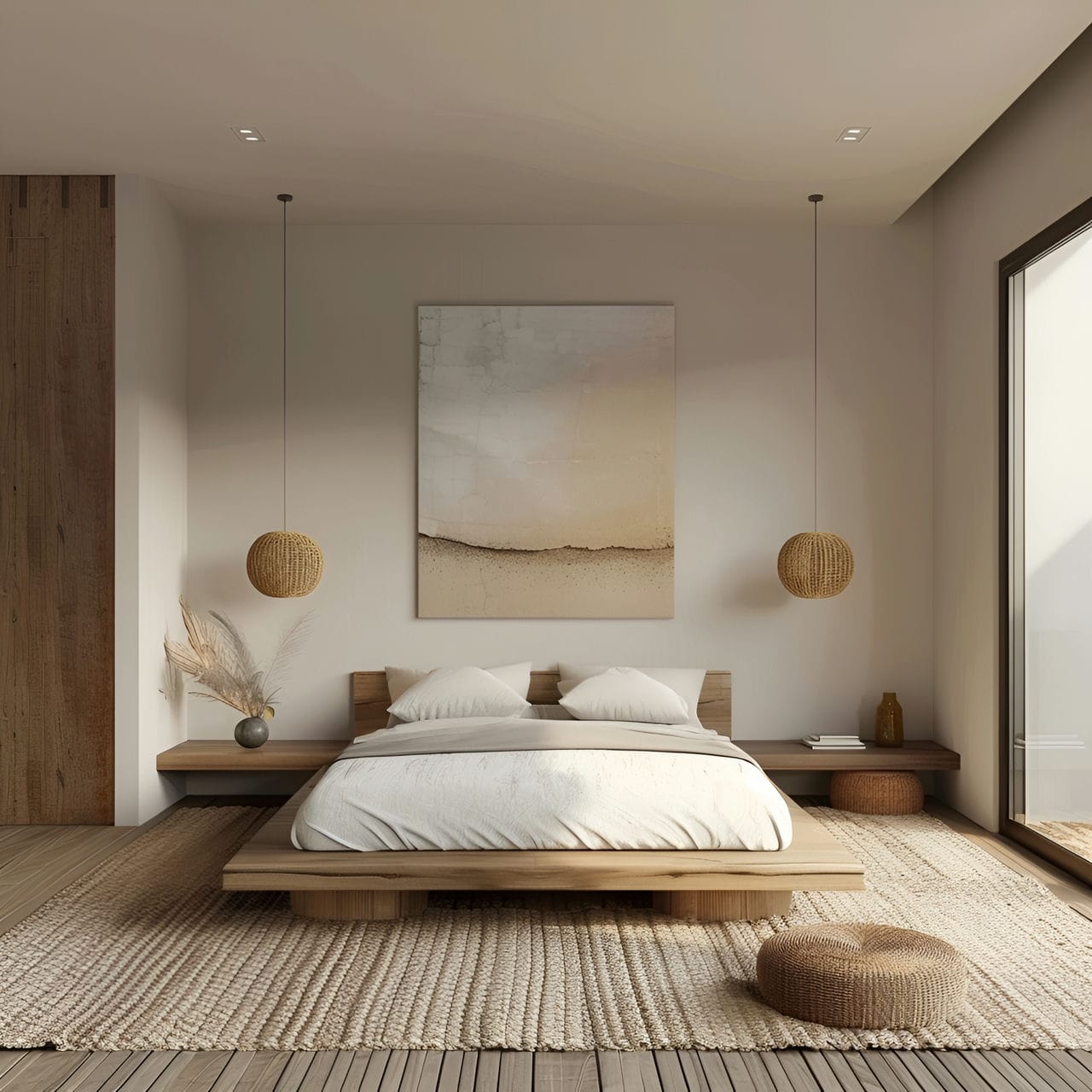
The largest size of a master bedroom is 16 feet (5 meters) x 22 feet (7 meters), or 352 square feet (33 square meters). This size is ideal for a house measuring over 3,003 square feet (279 square meters). A master bedroom of this size can have a king or California king-size bed, a sitting area with a sofa and chairs, a desk, and a large TV. It can also have a spacious walk-in closet and a master bathroom, ranging from 110 square feet (10 square meters) to 200 square feet (19 square meters).
What is the use and purpose of a master bedroom?
The use and purpose of a master bedroom is to provide a comfortable and private space for the homeowners to relax and enjoy. It is a personal retreat that reflects the homeowner’s taste and style. Firstly, the main purpose of a master bedroom is to provide comfort. It should have a comfortable bed, a cozy mattress, and soft pillows. It should also have adequate lighting, ventilation, and temperature control. The room should be spacious enough to accommodate the furniture and belongings of the homeowners and allow for some movement and flexibility. Secondly, a master bedroom should provide privacy. It should be located in a quiet and secluded area of the house, away from the noise and disturbance of other rooms. The room should have a door that can be locked and windows that can be covered. It should also have a private bathroom accessible only from the bedroom, and a walk-in closet that can store the clothes and accessories of the homeowners. Lastly, the purpose of a master bedroom is also to provide enjoyment. The room should have a sitting area where the homeowners can relax, read, watch TV, or chat. It should also have a desk where the homeowners can work, study, or write. The room should have a personal touch, such as photos, paintings, or decorations that reflect the personality and interests of the homeowners. It should be a place where the homeowners can feel happy and satisfied.
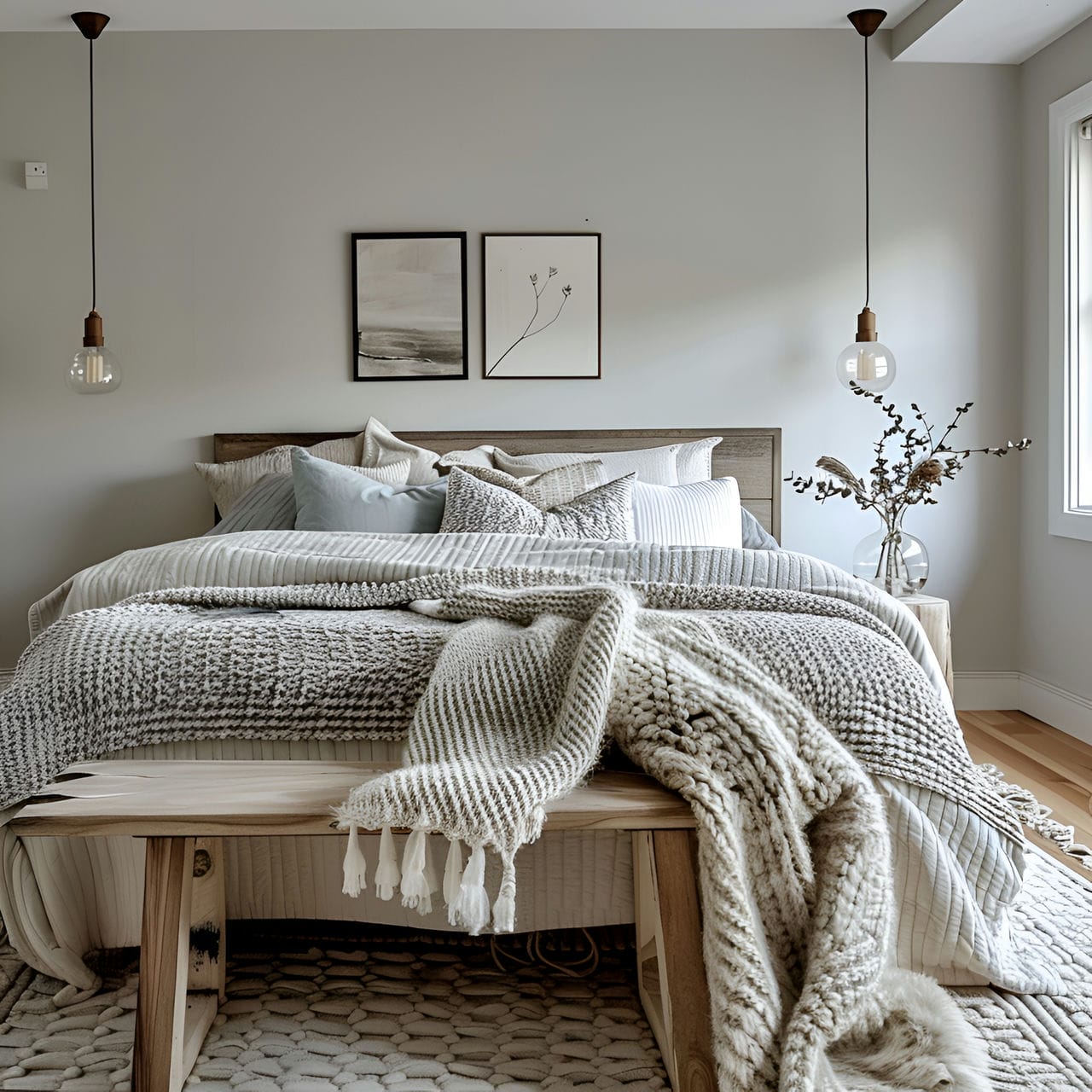
What is the typical shape of a master bedroom?
The typical shapes of a master bedroom are square, rectangular, L-shaped, and T-shaped. Firstly, a square master bedroom has equal length and width, such as 14 feet (4 meters) by 14 feet (4 meters) or 196 square feet (18 square meters). It can fit a queen or king-size bed, two nightstands, a dresser, and a chair. It can also have a small bathroom and a closet, adding another 40 square feet (4 square meters) to 50 square feet (5 square meters) of the total area. Secondly, a rectangle master bedroom has a longer length than width, such as 14 feet (4 meters) by 18 feet (5 meters), or 252 square feet (23 square meters). It can accommodate a king-size bed, two nightstands, a dresser, a sofa, a center table, and a TV stand. The room can also have a walk-in closet and a bathroom, ranging from 50 square feet (5 square meters) to 100 square feet (9 square meters) or more. Thirdly, an L-shaped master bedroom has two sections that form a right angle, such as 14 feet (4 meters) by 16 feet (5 meters) and 8 feet (2 meters) by 10 feet (3 meters) or 312 square feet (29 square meters). The room can have a king or California king-size bed, two nightstands, a dresser, a chair in one section, and a sitting area with a sofa, a center table, and a TV in the other section. It can also have a bathroom and a closet, which can add another 50 square feet (5 square meters) to 100 square feet (9 square meters) to the total area. Lastly, a T-shaped master bedroom has three sections that form a T shape, such as 14 feet (4 meters) by 16 feet (5 meters), 8 feet (2 meters) by 10 feet (3 meters), and 6 feet (2 meters) by 8 feet (2 meters) or 334 square feet (31 square meters). The room can have a king or California king-size bed, two nightstands, a dresser, and a chair in the main section, a sitting area with a sofa, a center table, and a TV in the second section, and a desk and a bookshelf in the third section. It can also have a bathroom and a closet, which can add another 50 square feet (5 square meters) to 100 square feet (9 square meters) to the total area.
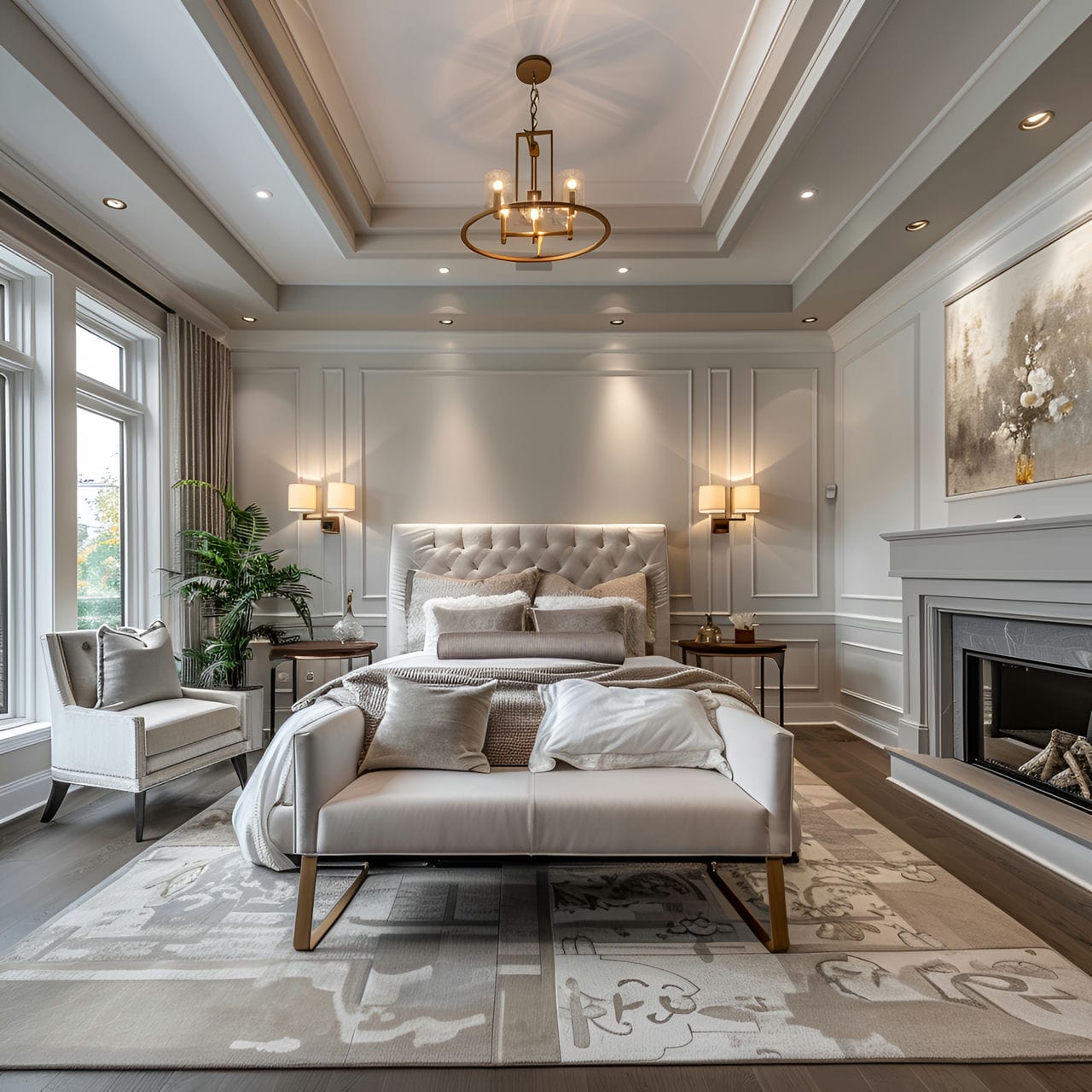
What furniture commonly equips a master bedroom?
Listed below are the types of furniture commonly equips a master bedroom:
- Bed: A bed is the most essential piece of furniture in a master bedroom, where the homeowners sleep and relax. It should be comfortable, spacious, and suitable for the climate and personal preference of the homeowners. The bed can also have a headboard, a footboard, and a bed frame that add style and functionality to the bedroom.
- Nightstand: A nightstand is a small table beside the master bedroom bed, usually on both sides. It provides a convenient surface for placing items such as a lamp, a clock, a phone, a book, a glass of water, or a remote control. It can also have drawers or shelves for storing personal belongings or other essentials.
- Dresser: A dresser is a large piece of furniture with multiple drawers for storing clothes, accessories, and other items. It helps to organize the master bedroom and keep it clutter-free. A dresser can also have a mirror on top or above it, which can be used for dressing, grooming, or checking one’s appearance.
- Wardrobe: A wardrobe is a tall cabinet with a door or doors and a rail or rods for hanging clothes. It can also have shelves, drawers, or baskets for storing shoes, bags, hats, or other items. It is useful for storing clothes that need to be hung or that do not fit in the dresser. A wardrobe in the master bedroom can also have a lock for security or privacy.
- Chair: A chair is a simple seating option that can be placed in the master bedroom for various purposes. It can be used for reading, working, relaxing, or dressing. It can also add color, texture, or pattern to the bedroom. A chair can be paired with a small table, a desk, or a vanity for more functionality.
- Area Rug: An area rug is a large piece of fabric laid on the floor, usually under the bed or in the center of the master bedroom. It provides warmth, comfort, and cushioning for the feet. It can also enhance the look and feel of the bedroom by adding color, pattern, or texture. An area rug can also help to define the space and create a focal point in the room.
- Curtains: Curtains are pieces of fabric that are hung on rods or rails over the windows. It provides privacy, light control, and insulation for the master bedroom. It can also add style, elegance, or coziness to the bedroom by complementing its color scheme, theme, or mood. For versatility, curtains can also be layered with blinds, shades, or valances.
- Extra Seat: An extra seat is an additional seating option that can be placed in the master bedroom for extra comfort, convenience, or guests. It can be a sofa, a loveseat, a bench, a chaise, an ottoman, or a pouf. It can be used for lounging, napping, chatting, or entertaining. An extra seat can also provide extra storage if it has a lid or a compartment.
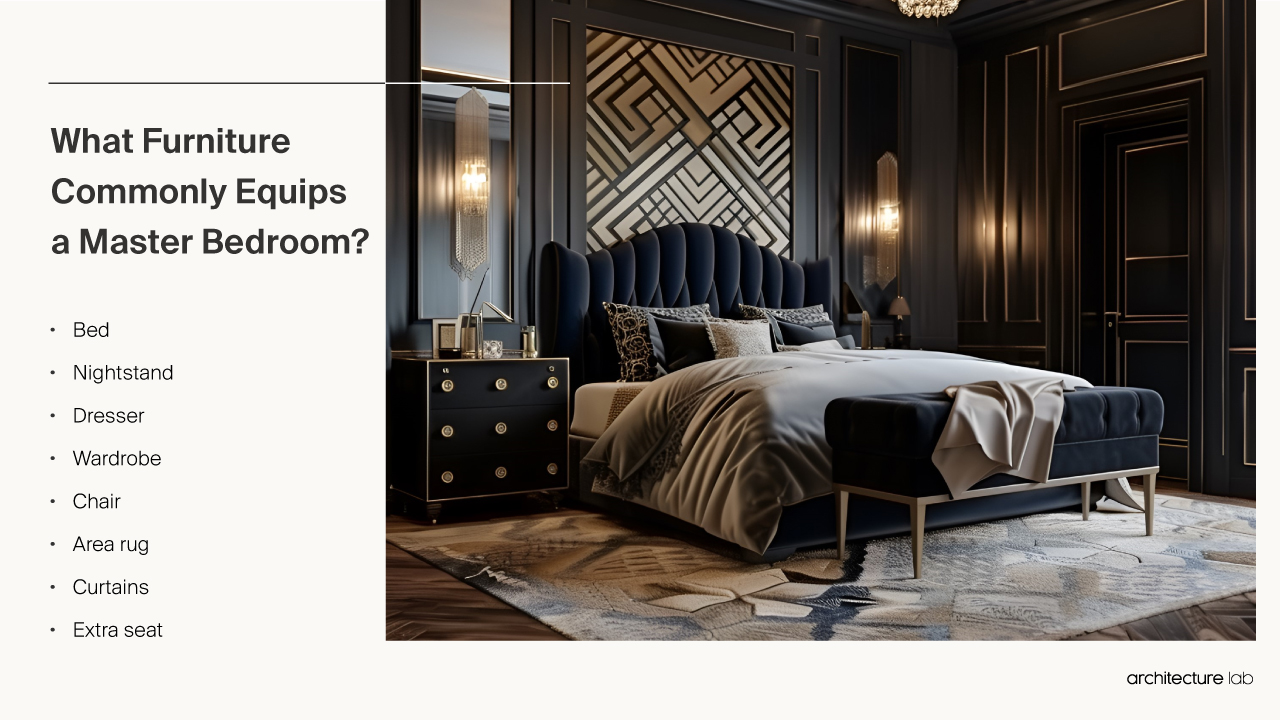
What is the normal ceiling height of a master bedroom?
The normal ceiling height of a master bedroom, including bedrooms, is 7 feet (2 meters), and anything lower than this may make the room feel cramped and uncomfortable. The average ceiling height of a master bedroom in the United States is 9 feet (3 meters). This is the standard height for most new homes built in the 21st century, as it creates a sense of spaciousness and elegance. A 9-foot (3-meter) ceiling can accommodate different lighting fixtures, such as chandeliers, recessed lights, or ceiling fans. The maximum ceiling height of a master bedroom depends on the preference and budget of the homeowners. Some master bedrooms may have vaulted, tray, or coffered ceilings reaching up to 13 feet (4 meters) or more. These ceilings add architectural interest and drama to the room but require more building and maintaining materials, labor, and energy.
What colors are usually master bedrooms painted?
Listed below are the colors usually master bedrooms:
- White: White is a classic color for master bedrooms, creating a clean, bright, and spacious look. It can also match with any furniture, decor, or bedding, making it easy to change the style of the room. It can also reflect natural light, making the room airy and comfortable. White can also be boring or cold, so adding some contrast or warmth with other colors or textures is important.
- Gray: Gray is a neutral color that can create a calm, soothing, and sophisticated atmosphere in a master bedroom. It can also work well with shades, tones, or hues, creating a harmonious and balanced look. Depending on the undertone and finish, it can also complement various styles, from modern to rustic. Gray can also be dull or depressing, so adding some pops of color or light with other elements is advisable.
- Blue: Blue is a cool color that can evoke a sense of relaxation, peace, and serenity in a master bedroom. It can also reduce stress, lower blood pressure, and improve sleep quality, making it a good choice for a restful space. It can also range from light to dark, soft to bold, and warm to cold, offering many varieties and options. Blue can also be cold or gloomy, so pairing it with warm or bright colors or accessories is recommended.
- Green: Green is a natural color that can bring a fresh, lively, and organic feel to a master bedroom. It can also promote a sense of harmony, growth, and renewal, making it a refreshing and energizing color. It can also blend well with different colors, such as brown, yellow, or white, creating a beautiful, earthy look. Green can also be overwhelming or clash with some colors, so choosing the right shade and amount of green for the room is important.
- Beige: Beige is a warm color that can create a cozy, inviting, and elegant look in a master bedroom. It can also add warmth and brightness to the room, especially if it has low natural light or a cold climate. It can also work well with different colors, such as blue, purple, or pink, creating a soft and romantic look. Beige can also be bland or outdated, so adding some interest or contrast with other colors or patterns is essential.
- Purple: Purple is a rich color that can create a luxurious, royal, and glamorous look in a master bedroom. It can also stimulate creativity, imagination, and passion, making it a fun and inspiring color. It can also vary from light to dark, lavender to plum, and cool to warm, offering a lot of diversity and flexibility. Purple can also be overpowering or tacky, so using it sparingly or moderately in the room is necessary.
- Yellow: Yellow is a bright color that can create a cheerful, sunny, and optimistic look in a master bedroom. It can also boost mood, energy, and happiness, making it a positive and uplifting color. It can also make the room look bigger, brighter, and warmer, especially if it has a small size or a dark orientation. Yellow can also be irritating or overwhelming, so using it carefully or subtly in the room is important.
- Pink: Pink is a sweet color that can create a feminine, romantic, and playful look in a master bedroom. It can also express love, affection, and tenderness, making it a lovely color. It can also range from pale to bright, coral to magenta, and warm to cool, offering many options and possibilities. Pink can also be childish or cliché, so it is advisable to balance it with neutral or mature colors or elements.
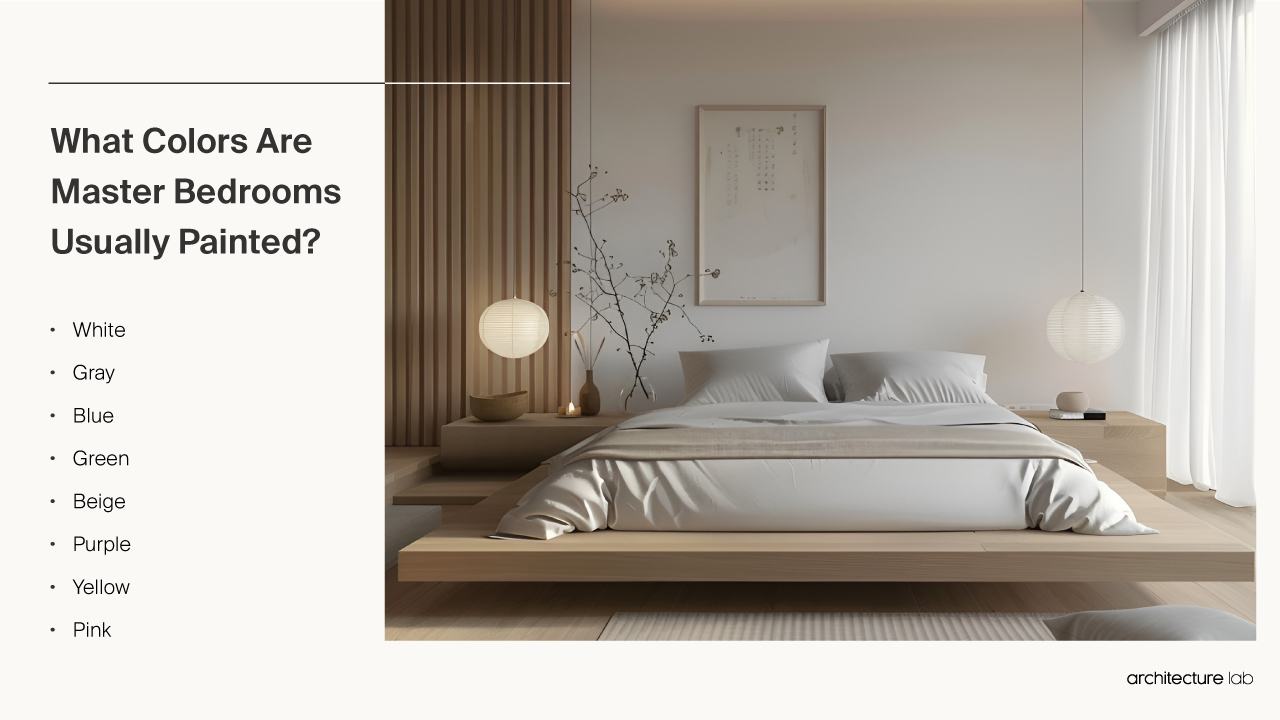
What makes the master bedroom functional?
The master bedroom is functional by providing a sanctuary for relaxation, sleep, and personal activities and enough storage and amenities to meet the occupants’ needs. Firstly, a comfortable bed is the centerpiece of a functional master bedroom, where the occupants spend most of their time resting and sleeping. It should have a suitable size, mattress, bedding, and pillows that match the preferences and comfort levels of the occupants. A comfortable bed should also be positioned for optimal lighting, ventilation, noise control, and easy access to power outlets, nightstands, and lamps. Secondly, a spacious closet is another essential element of a functional master bedroom, where the occupants store and organize their clothes, shoes, accessories, and other personal items. It should have enough room, shelves, drawers, hangers, and hooks to accommodate the wardrobe and belongings of the occupants, as well as a mirror, a light, and a door or a curtain for privacy. A spacious closet should also be located close to the bed and the bathroom to make the dressing process more convenient and efficient. Lastly, a private bathroom is the final key element of a functional master bedroom, as it is where the occupants perform their hygiene and grooming routines and enjoy some pampering and relaxation. It should have a sink, a toilet, a shower, a tub, and a cabinet or a shelf to store the toiletries and towels of the occupants. A private bathroom should also have a window, a fan, or a vent for natural light and ventilation, a lock, a mat, and a trash can for safety and cleanliness.
How is energy efficiency achieved in a master bedroom?
Energy efficiency is achieved in a master bedroom by choosing the right air conditioner, insulating the roof and walls, using LED lights, installing smart devices, and adopting good habits. Firstly, choosing the right air conditioner is crucial to achieving energy efficiency in a master bedroom. An air conditioner should have a suitable size, power, and energy efficiency rating for the room. A too-big or too-small air conditioner can waste energy and cause discomfort. A higher energy efficiency rating means lower electricity consumption and cost. Matching the air conditioner’s horsepower to the room size can save up to 10% of monthly energy. A master bedroom of 248 square feet (23 square meters) should have an air conditioner of 1.5 horsepower.
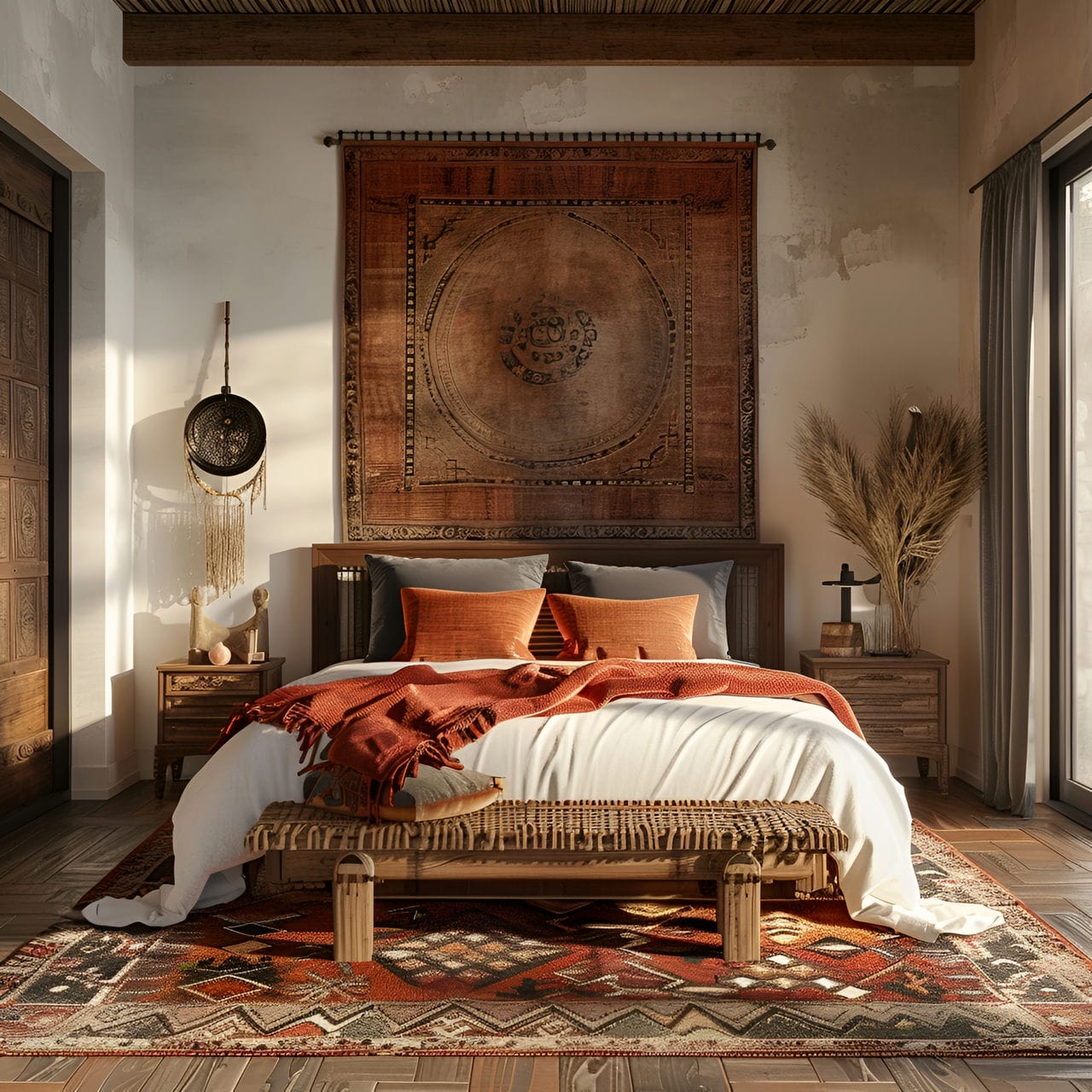
Secondly, insulating the roof and walls can also improve the energy efficiency of a master bedroom. Insulation can prevent heat loss or gain through the roof and walls, reducing the need for heating or cooling. Insulation can also make the room more comfortable and quiet. Insulating the roof can save up to $750 (€682.5, £652.5) on heating bills after five years and 1,345 pounds (610 kilograms) of carbon per year. Insulating the walls can save up to $310 (€282.1, £269.7) a year in heating bills and 1.1 tonnes (3.1 cubic meters) of carbon per year, contributing to greenhouse emissions. Thirdly, LED lights can also make a master bedroom more energy efficient. LED lights use less energy and last longer than traditional incandescent or fluorescent lights. LED lights can also provide better lighting quality and color. It uses 75% less energy and lasts 25 times longer than incandescent lights. Replacing one incandescent light bulb with an LED light bulb can save $75 (€68.25, £65.25) in energy costs over its lifetime.
Fourthly, installing smart devices can also enhance the energy efficiency of a master bedroom. Smart devices such as thermostats, blinds, fans, and plugs can be controlled remotely or automatically. Smart devices can help optimize the room’s temperature, lighting, and ventilation and turn appliances off or on when not in use. A smart thermostat can save up to 10% on yearly heating and cooling costs. A smart plug can save up to $100 (€91, £87) annually by eliminating standby power. Lastly, adopting good habits can also contribute to the energy efficiency of a master bedroom. Good habits include setting the thermostat to a comfortable but not too high or low temperature, turning off the lights and appliances when leaving the room, using natural light and ventilation when possible, and cleaning and maintaining the air conditioner and other devices regularly. These habits can help reduce energy consumption and waste and extend the devices’ lifespan. Adjusting the thermostat by one degree can save up to 3% on heating or cooling costs. Turning off the lights when unnecessary can save up to $75 (€68.25, £65.25) per year.
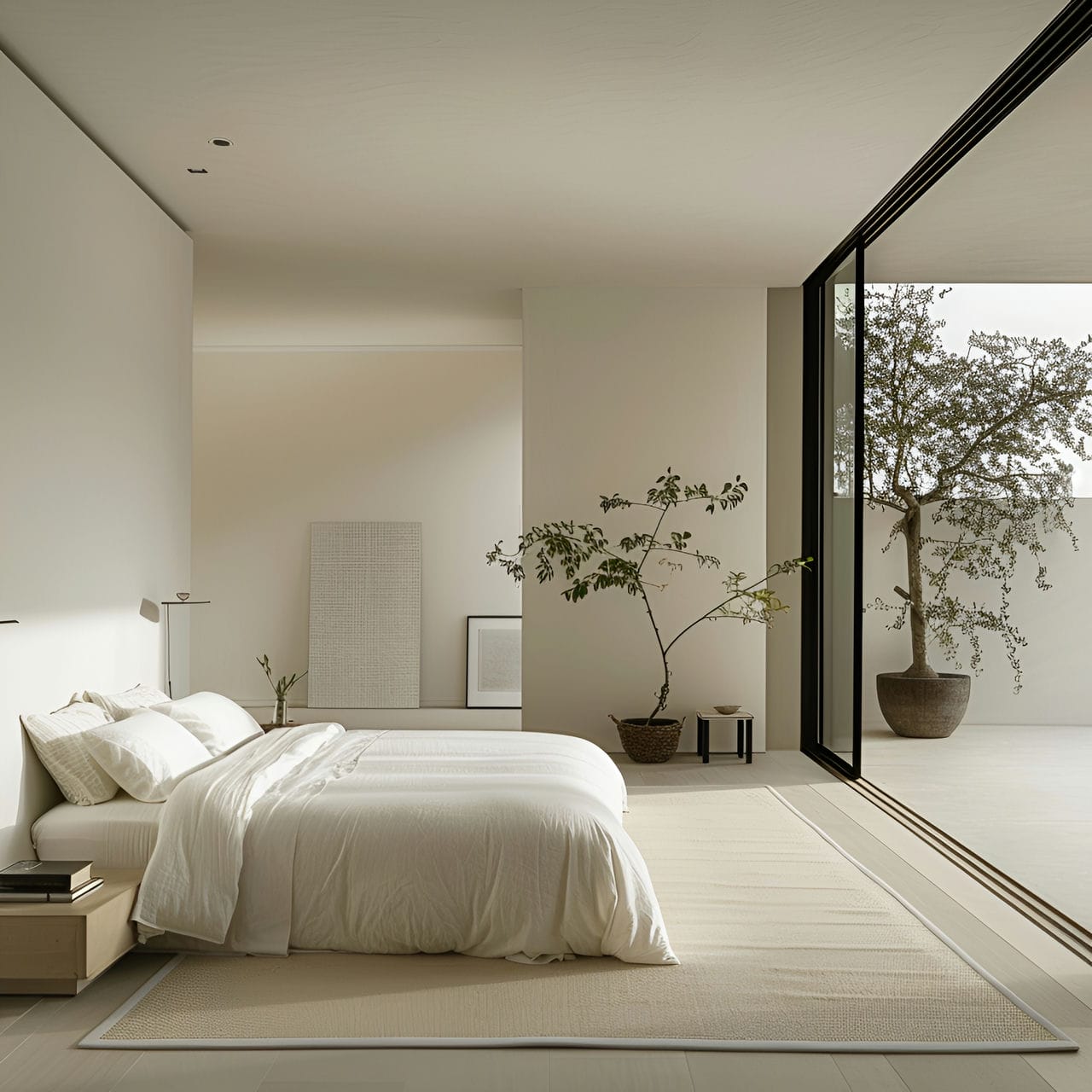
How much does it typically cost to renovate a master bedroom?
It typically costs $20,000 (€18,200, £17,400) to $40,000 (€36,400, £34,800) to renovate a master bedroom. This includes labor costs, design fees, inspection fees, and construction costs. The cost of materials, such as paint, wood, insulation, drywall, windows, doors, molding, flooring, and furniture, can vary widely depending on the choices and preferences of the homeowners. Some common material costs, not including labor, are $300 (€273, £261) to $800 (€728, £696) for paint, $1 (€0.91, £0.87) to $5 (€4.55, £4.35) per square feet of wood, $900 (€819, £783) to $1,500 (€1,365, £1,305) for insulation, $100 (€91, £87) per windows, $500 (€455, £435) to $5,000 (€4,550, £4,350) per door, $200 (€182, £174) to $7,000 (€6,370, £6,090) for the flooring, and $1,000 (€910, £870) to $10,000 (€9,100, £8,700) for the furniture.
What factors affect the master bedroom renovation?
Listed below are the factors that affect the master bedroom renovation:
- The size of the room: The master bedroom determines how much space is available for the renovation and how much materials and labor are needed. A larger room may require more work and cost, but it offers more possibilities for design and functionality.
- The scope of the project: The scope refers to how extensive and complex the renovation is and what elements are involved. A simple project may only involve changing the paint, flooring, and lighting, while a complex project may involve expanding the room, adding a bathroom or a closet, or changing the layout. A more ambitious project may increase the value and comfort of the master bedroom, but it may also require more time, money, and permits.
- The quality of the materials: The quality of the materials refers to how durable, attractive, and efficient the materials are and how they match the master bedroom style and preference of the homeowners. Higher-quality materials may last longer, look better, and perform better, but they may also be more expensive and harder to find. Lower-quality materials may be cheaper and more available, but they may also wear out faster, look worse, and perform worse.
- The location of the home: The location of the home refers to the region, state, or city where the home is located and how it affects the availability and cost of labor and materials, the regulations and standards of the master bedroom renovation. Different locations may have different supply and demand, weather conditions, and building codes, which may influence the cost and quality of the renovation.
- The condition of the existing room: The condition of the existing master bedroom refers to the state and structure of the current room and how it affects the feasibility and difficulty of the renovation. If the existing rooms have any damage, mold, or structural issues, the renovation may require more work and money to fix and may pose some challenges and risks. If the existing room is in good shape, the renovation may be easier and cheaper and offer more flexibility and creativity.
- The contractor and designer: The contractor and designer refer to the professionals hired to plan, manage, and execute the master bedroom renovation and how they affect the outcome and satisfaction. A reputable and experienced contractor and designer may charge more, but they may also provide better quality and service and have more connections and resources. A less reliable and skilled contractor and designer may charge less, but they may also provide lower quality and service and have fewer connections and resources.
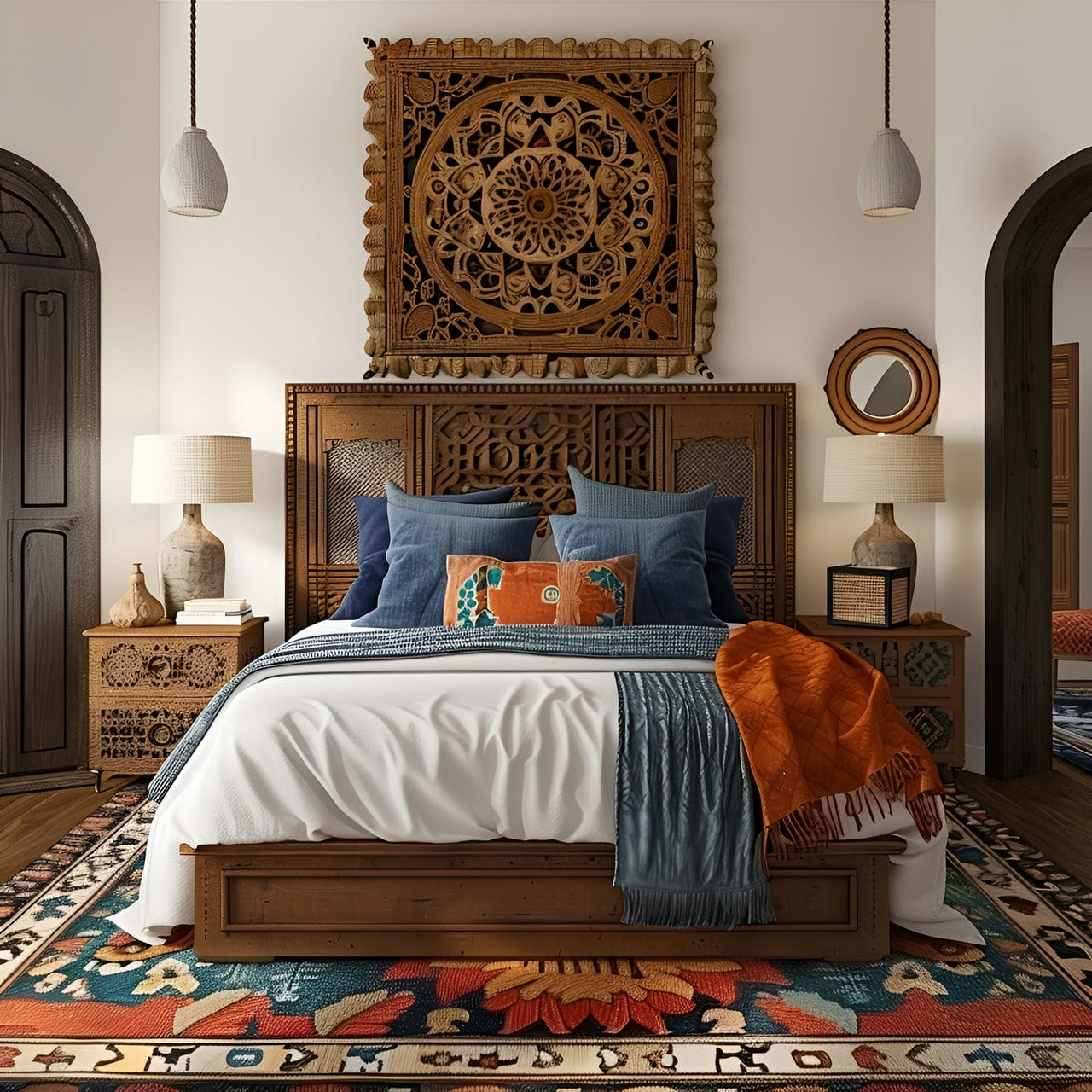
Is an architect required to renovate a master bedroom?
No, an architect is not required to renovate a master bedroom, but it is highly advised to hire one. An architect is a professional who designs and plans buildings and spaces and has the knowledge and skills to handle complex and technical aspects of a renovation project. They can help homeowners create a functional and aesthetic master bedroom that meets their needs and preferences and complies with building codes and regulations. An architect can also help the homeowners find and coordinate with other professionals, such as contractors, engineers, and electricians, and manage the project’s budget and timeline.
How can an architect help you upgrade a master bedroom?
Listed below are the ways that an architect can help an owner upgrade a master bedroom:
- Design and plan: An architect can design and plan the master bedroom according to the owner’s needs and preferences and ensure that the project complies with the building codes and regulations. An architect can also create drawings, models, and renderings to help the owner visualize the outcome.
- Budget and schedule: An architect can help the owner estimate the project’s cost and time and manage the budget and schedule throughout the master bedroom renovation process. An architect can also help the owner find and negotiate with contractors, suppliers, and other professionals.
- Coordinate and supervise: An architect can coordinate and supervise the construction of the master bedroom and ensure that the work is done according to the design and plan. An architect can also communicate with the owner, the contractor, and the authorities and handle any issues or changes that may arise.
- Solve problems and offer solutions: An architect can solve problems and offer solutions that the owner may not have thought of or that may be challenging or complex. An architect can also use their creativity and innovation to enhance the design and functionality of the master bedroom.
- Increase value and appeal: An architect can increase the value and appeal of the home by creating a master bedroom that is spacious, comfortable, and attractive. An architect can also make the master bedroom match the style and personality of the owner, and the overall look and feel of the home.
- Save time and money: An architect can save the owner time and money by making the master bedroom renovation more efficient and effective and avoiding errors and delays. An architect can also help the owner choose quality materials and fixtures that are durable, attractive, efficient, and fit the budget.
- Provide satisfaction and peace of mind: An architect can provide the owner with satisfaction and peace of mind by delivering the master bedroom on time, on budget, and according to the expectations. An architect can also make the owner happy and proud of their master bedroom and enjoy and appreciate their living space.
- Ensure quality and safety: An architect can ensure the quality and safety of the master bedroom by using their knowledge and skills to handle the technical and structural aspects of the project. An architect can inspect the work and ensure it meets its standards and expectations.
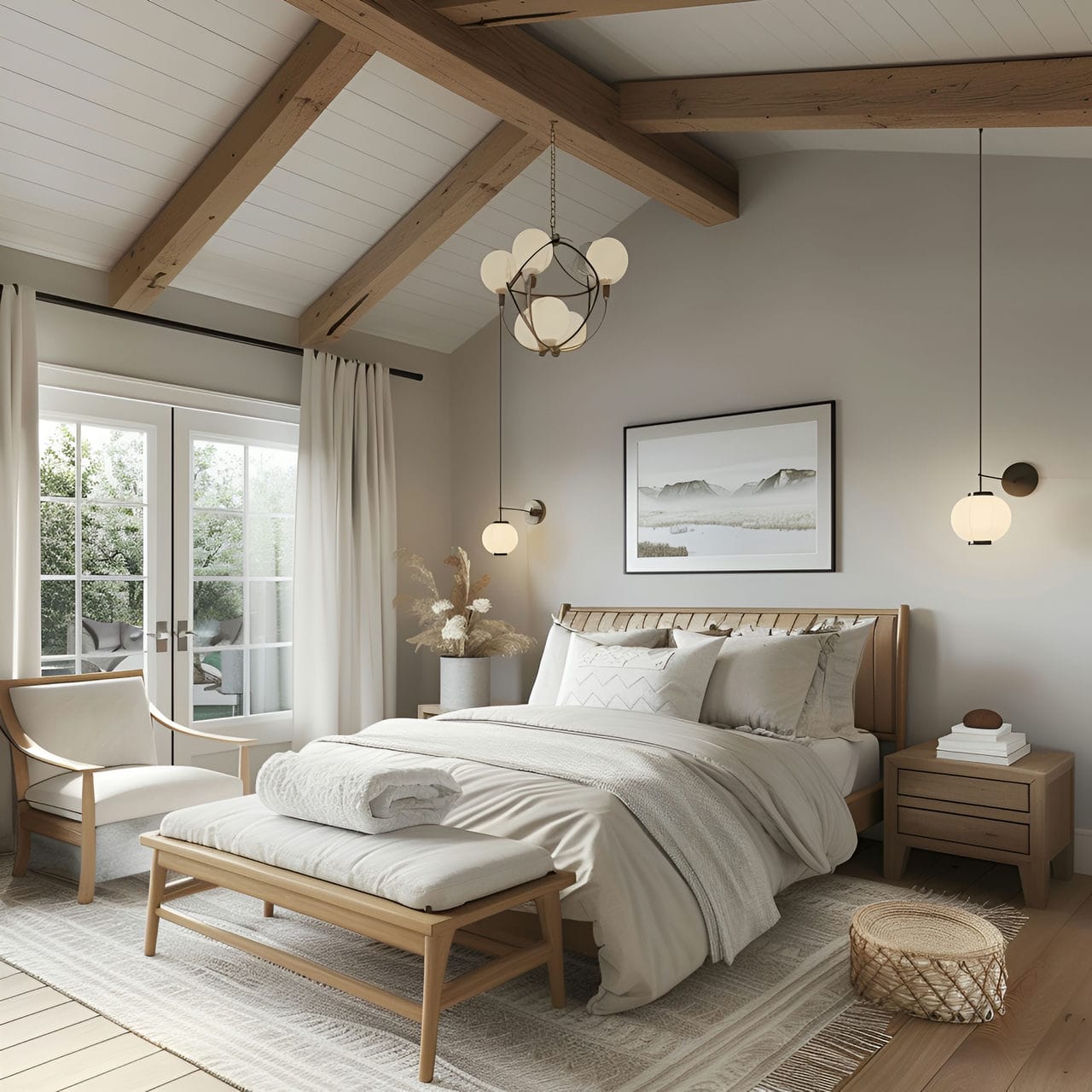
How much does it cost to hire an architect to renovate a master bedroom?
It costs $7,500 (€6,825, £6,525) to $30,000 (€27,300, £26,100) to hire an architect to renovate a master bedroom. The typical percentage fee charged by an architect ranges from 5% to 20% of the total cost of the project. The lower end of the range accounts for basic design plans and renovation oversight, while the higher end covers more comprehensive and creative services. The average cost to build or remodel a master bedroom is $150,000 (€136,500, £130,500), meaning the average cost to hire an architect for this project would be between $7,500 (€6,825, £6,525) to $30,000 (€27,300, £26,100).
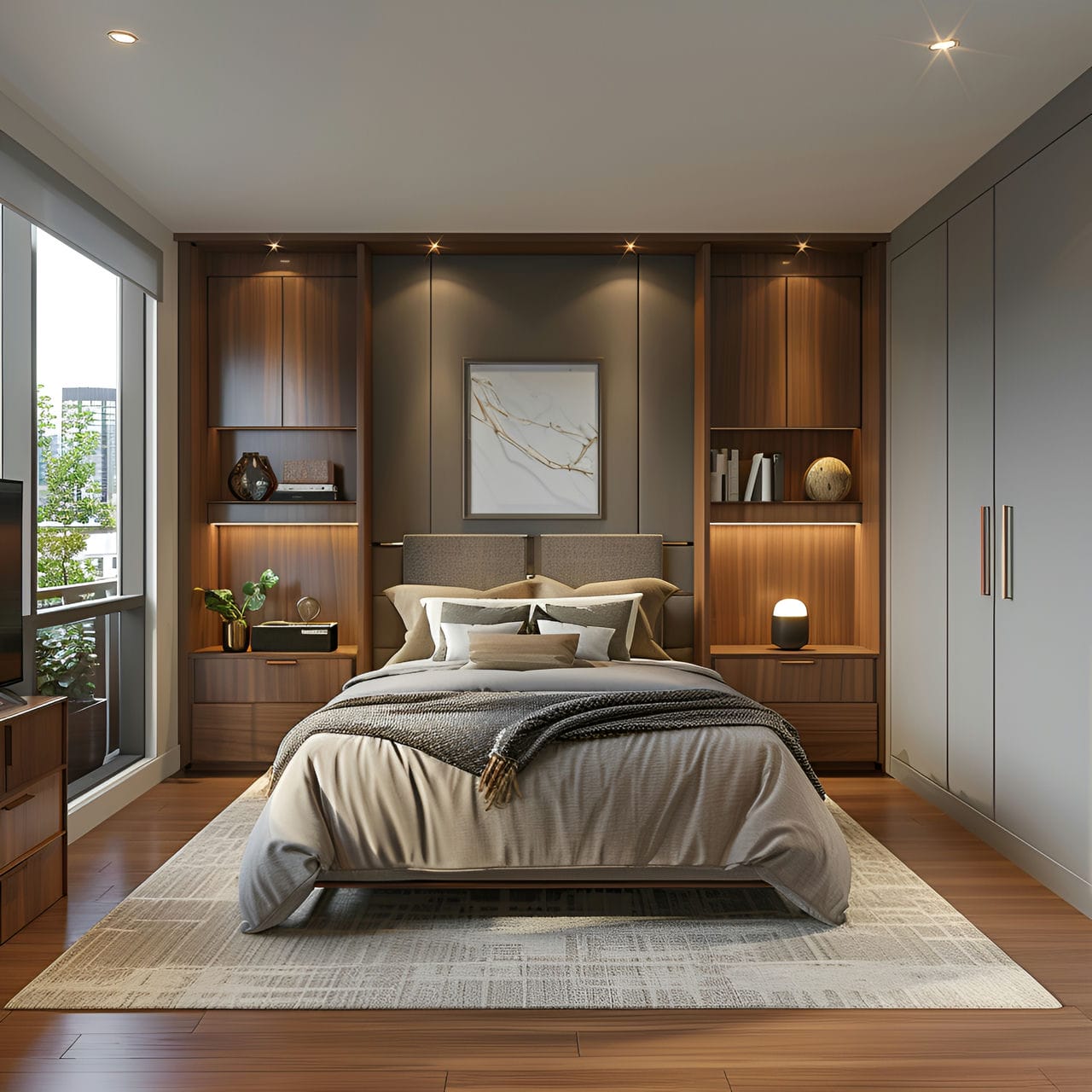
Some architects may charge a flat fee or an hourly rate for their services instead of a percentage fee. A flat fee is a fixed amount that the architect and the client agree on before the project starts, and it usually ranges from $5,000 (€4,550, £4,350) to $20,000 (€18,200, £17,400) for a $100,000 (€91,000, £87,000) project. An hourly rate is based on the time the architect spends on the project, usually from $50 (€45.5, £43.5) to $150 (€136.5, £130.5) per hour. The final cost of hiring an architect by these methods may vary depending on the scope and duration of the project.
Is it worth it to hire an architect to upgrade a master bedroom?
Yes, it is worth it to hire an architect to upgrade a master bedroom if the owner wants to create a functional, comfortable, attractive space that matches their style and personality. An architect can provide creative solutions and quality work, increase home value, and save the owner time and money by making the project more efficient and effective. An architect can also handle the technical and structural aspects of the project and ensure that it complies with the building codes and regulations.
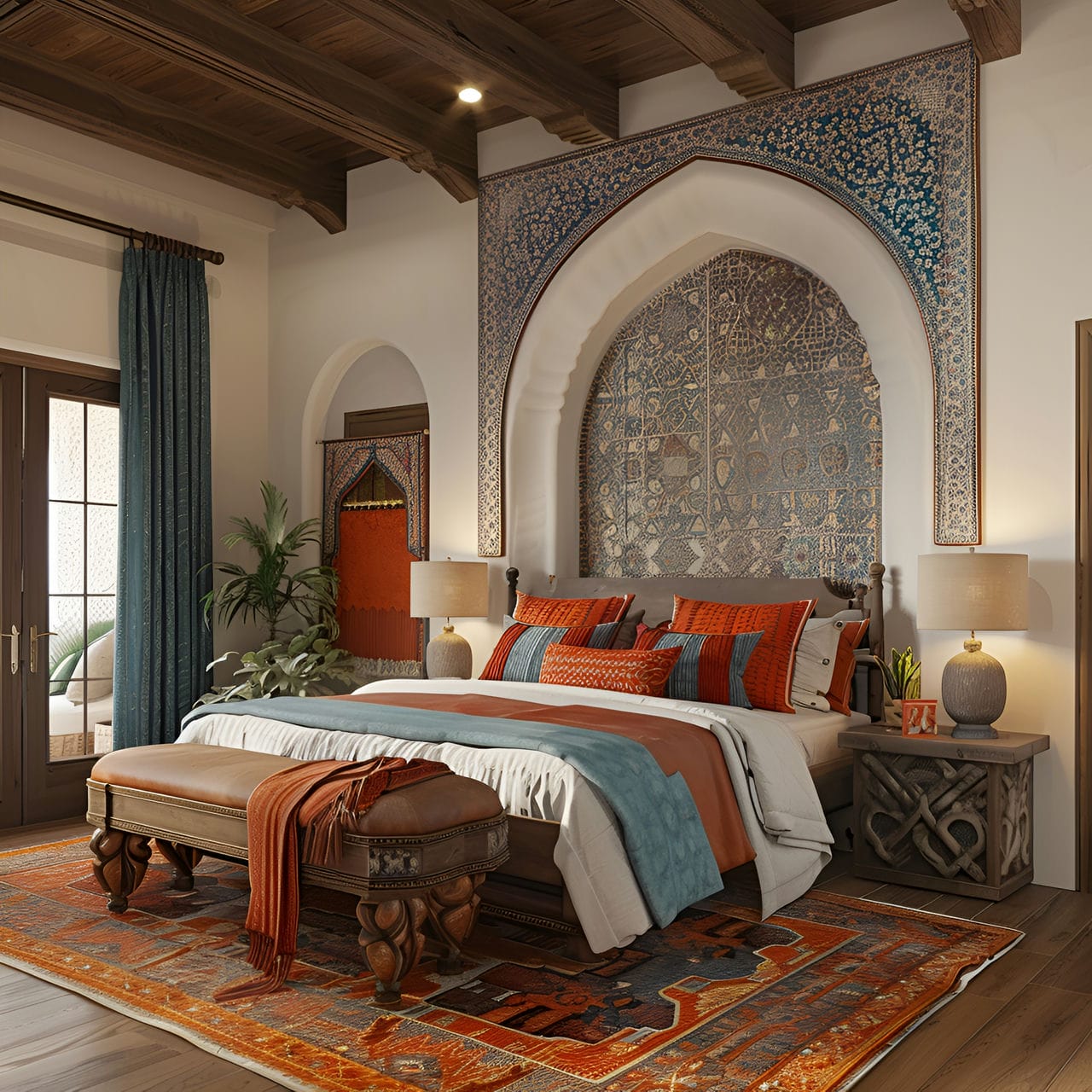
How long is needed to redecorate a master bedroom?
2 to 3 weeks is needed to redecorate the master bedroom. Firstly, the extent of the redecoration project will greatly influence the time required. If the renovation involves major structural changes, such as modifying walls or ceilings, it will likely take longer than a project focused on cosmetic updates like painting and replacing furniture. Structural modifications typically involve additional planning, permits, and construction work, which can extend the overall timeline. Secondly, the availability of resources, including materials and labor, is crucial in determining the duration. If specific materials or furnishings need to be ordered and have long lead times, it can delay the project. If the homeowner encounters difficulties scheduling and coordinating with contractors, it may also prolong the redecoration process. Lastly, the size of the master bedroom is a factor to consider. A larger room will naturally require more time for painting, installing flooring, and arranging furniture than a smaller space. If the homeowner desires intricate detailing or custom-made elements, such as built-in storage or decorative moldings, it will add to the overall time needed to complete the project.
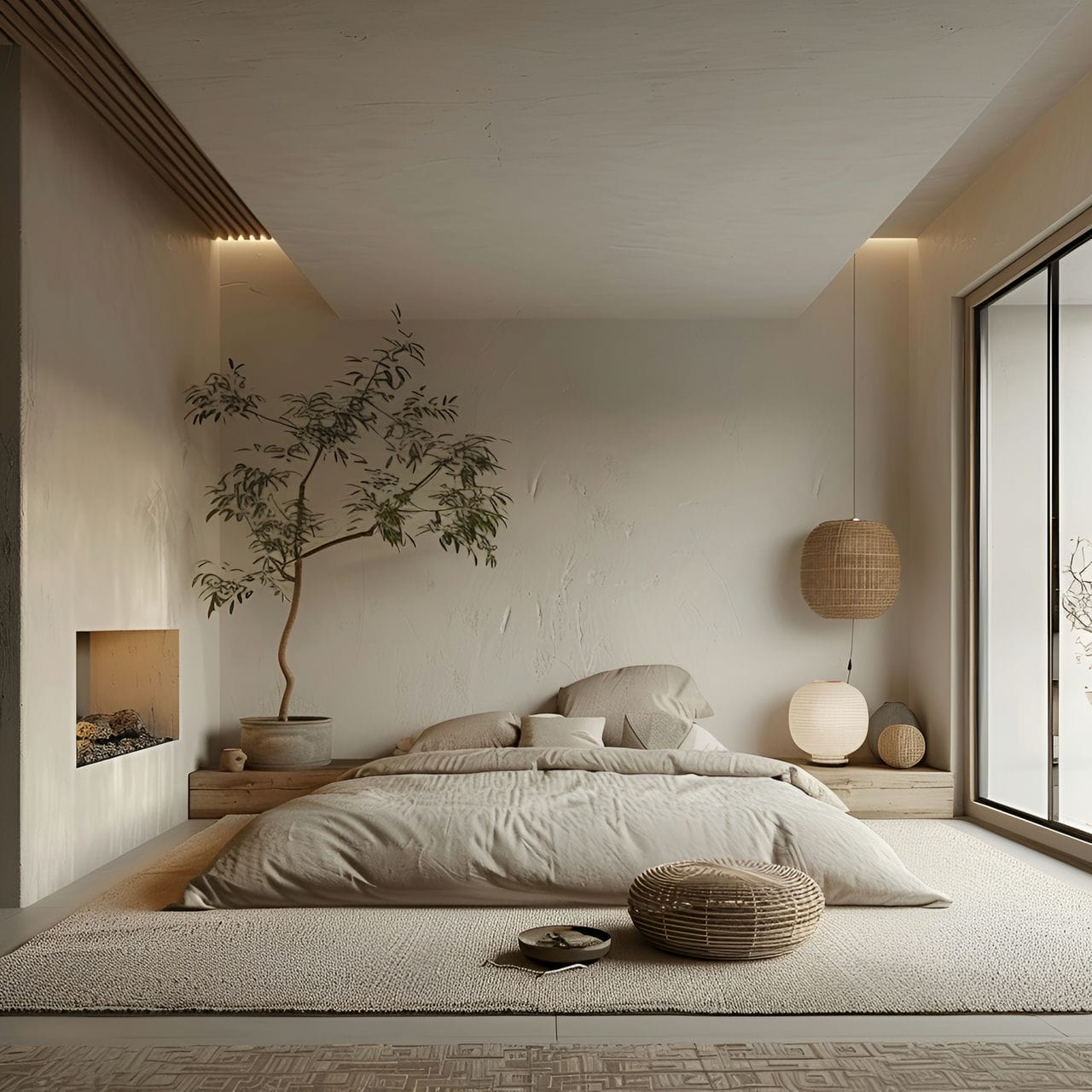
What are the struggles of the homeowner to redecorate a master bedroom?
Listed below are the struggles of the homeowner to redecorate a master bedroom:
- Budget constraints: Homeowners may struggle with setting a realistic budget for the master bedroom redecoration project, as costs can quickly increase with materials, furnishings, and professional services.
- Limited time availability: Juggling work, family, and other responsibilities can make it challenging for homeowners to find the necessary time to plan, coordinate, and oversee the master bedroom redecoration process.
- Decision-making overload: Through numerous master bedroom design choices, homeowners may feel overwhelmed when deciding on color schemes, furniture styles, and decor options, leading to indecisiveness and delays.
- Lack of expertise: Homeowners may not have the necessary knowledge or skills to execute the master bedroom redecoration, requiring them to rely on professionals for guidance and execution.
- Coordination with contractors: Coordinating schedules and ensuring effective communication with contractors, such as painters, carpenters, and electricians, can be a struggle for homeowners, potentially leading to master bedroom renovation delays.
- Unforeseen complications: Homeowners may encounter unexpected issues during the master bedroom redecoration process, such as hidden structural problems or electrical issues, which can prolong the project and add to the overall costs.
- Sourcing materials: Finding the right master bedroom materials, furnishings, and accessories within the desired budget and style preferences can be a struggle, especially if specific items need to be ordered or customized.
- Disruption of daily life: Redecorating a master bedroom often involves moving furniture, dust, and noise, which can disrupt the homeowner’s daily routine and create temporary inconvenience.
